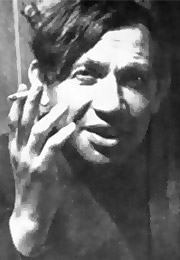


Oil on canvas
74 x 85.7 cm (29 1/8 x 33 3/4 in.)
frame: 100 × 104.7 × 10.2 cm (39 3/8 × 41 1/4 × 4 in.)
L1988.62.26
Signed lower right: Soutine
[Léopold Zborowski, Paris]; Albert C. Barnes, Merion, Pa., by 1923. Sold at auction, Notable Modern French and Other Paintings…, Parke Bernet, New York, 18 Jan. 1945, lot 170 ( as Square in Cagnes); bought at auction by Henry Pearlman; Henry and Rose Pearlman Foundation, by 1959.
Henry Pearlman purchased this painting at auction in New York in 1945, finding it more challenging than any of the works of art he had bought previously. It set him on a new path in collecting.
Many of my friends and viewers of my art collection have asked me when I first became interested in modern paintings, what my first purchase was, and what prompted me to build…
Many of my friends and viewers of my art collection have asked me when I first became interested in modern paintings, what my first purchase was, and what prompted me to build up a collection. During the few years previous to 1943, I had purchased a few early Italian, French, and American paintings, mostly of the genre school – realistic type. I found them decorative but neither provocative nor moving, and used them more or less as wall coverings. One day in 1945, while passing the American Art – Anderson Galleries in New York (later Parke Bernet), I saw a very colorful painting by Chaïm Soutine, titled Village Square, in blue, yellow, and golden colors slashed on as if by a trowel. When this painting came up for sale, I was the high bidder, and happily carted the painting out to my home in the country. The painting was hung over the mantelpiece, some thirty feet from the entrance hall, and when I came home in the evenings and saw it I would get a lift, similar to the experience of listening to a symphony orchestration of a piece well known and liked. This first pleasant experience with a modern painting started me on a road of adventure that has been both exhilarating and satisfying. I haven’t spent a boring evening since that first purchase.

Chaïm Soutine (1893-1943)
Soutine was one of the leading figures of the early 20th-century international conglomerate of artists known as the School of Paris. He developed an idiosyncratic style that was derived from his study of Old Masters and infused with a modern sense of freedom, conveyed through pure color and boldly impastoed paint. The artist’s intense painterly manner influenced subsequent generations of painters, including Abstract Expressionists.
Soutine was born to an Orthodox Jewish family originally from Belarus and grew up in a Lithuanian ghetto. He was attracted to drawing at early age, and, despite protests from those in his community who believed in Talmudic proscriptions against images, he was determined to become an artist. He studied at a small academy in present-day Vilnius, where he learned about Russian art, including its avant-garde varieties. In 1913, Soutine moved to Paris, where he joined Fernand Cormon’s atelier. He found inspiration by studying in the Louvre directly from Old Masters such as Rembrandt, Tintoretto, Goya, and El Greco, as well as more recent masters such as Gustave Courbet.
In 1915, Soutine met Amedeo Modigliani through their mutual friend Jacques Lipchitz and soon became close to the Italian artist. Modigliani provided crucial encouragement to Soutine and included him in his infamous drinking sessions. As it was for Modigliani, portraiture was a significant subject for Soutine. The artist’s portraits often exaggerate certain features, including awkward poses and melancholy facial expressions, imparting an expressive urgency to his subjects. He sometimes worked on series of certain social types, making a number of versions of figures such as pastry cooks, bellboys, and choirboys dressed in their identifiable working clothes. The pathos evoked by such figures often suggested not only the subjects’ inner lives but also the weight of Soutine’s own gaze and feelings.
Soutine applied a similar kind of painterly intensity to his still-life paintings of food, which are often inflected with ritualistic overtones that allude to the artist’s religious upbringing, as well as traditional memento mori themes that relate to his own experience of enduring shortages of food while growing up. In 1918, Soutine was apparently encouraged by his dealer to travel to the Midi to pursue landscape painting. In Céret and its environs he painted dramatically contorted scenes of the land and towns. These paintings often had a visionary quality, featuring vortex-like spatial configurations and forceful brushwork. In 1923, the American collector Albert Barnes purchased approximately one hundred examples of Soutine’s work, bringing a sudden rise in prices and greater critical visibility, which allowed Soutine to support himself through his art for the rest of his life. During his final years, however, he suffered both from illness and from the consequences of hiding from the Nazis during their occupation of Paris and died of complications from surgery before the war was over.